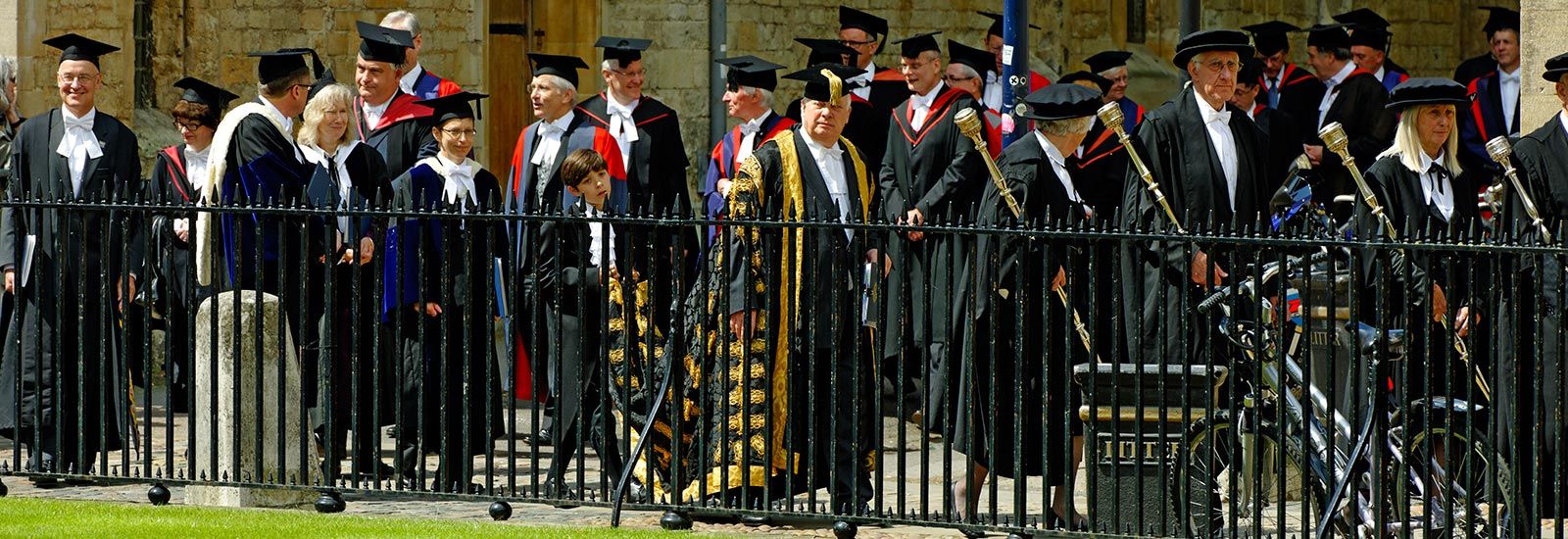
Governance
Oxford's distinctive governance structure stems from its long history.
Congregation
Congregation is the sovereign body of the University and acts as its ‘parliament’. It has just over 5,000 members, including academic staff; heads and other members of governing bodies of colleges; and senior research, computing, library and administrative staff.
Congregation has responsibility for:
- Approving changes to the University’s statutes and regulations;
- Considering major policy issues submitted by Council or members of Congregation;
- Electing members to Council and other University bodies, and approving the appointment of the Vice-Chancellor.
Council
Council is the University’s principal executive and policy-making body. It has 26 members, including four from outside the University. It is responsible for the academic policy and strategic direction of the University, for its administration, and for the management of its finances and property. It has five major committees: Education Committee, General Purposes Committee, Personnel Committee, Planning and Resource Allocation Committee, and Research Committee.
Colleges
The 39 colleges, though independent and self-governing, form a core element of the University, to which they are related in a federal system. Each college is granted a charter approved by the Privy Council, under which it is governed by a Head of House and a Governing Body comprising of a number of Fellows, most of whom also hold University posts. There are also four Permanent Private Halls, which were founded by different Christian denominations, and still retain their religious character today.
The Conference of Colleges represents the common concerns of the colleges on Council, its committees, and the four Divisional Boards, and acts as a body for intercollegiate discussion and decision-making.
Divisions and departments
The University’s academic departments, faculties and research centres are grouped into four divisions: Humanities; Mathematical, Physical and Life Sciences; Medical Sciences; and Social Sciences. Day-to-day decision-making in matters such as finance and planning is devolved to the divisions. The Department for Continuing Education is the responsibility of a separate board.
Chancellor
The Chancellor, who is usually an eminent public figure elected for life, serves as the titular head of the University, presiding over all major ceremonies.
Vice-Chancellor
The Vice-Chancellor holds office for seven years and is the senior officer of the University.
Pro-Vice-Chancellors
There are six Pro-Vice-Chancellors who have specific portfolios in Development and External Affairs; Education; Innovation; People & Digital; Planning and Resources; and Research. There are also up to ten Pro-Vice-Chancellors without portfolio, who undertake a range of duties on behalf of the Vice-Chancellor, including presiding at degree ceremonies and chairing electoral boards.
Further information about University governance on the Planning and Council Secretariat website
Information on and links to the main bodies involved in the University's governance, its legislation, its elections, and on the team supporting the governance structures.